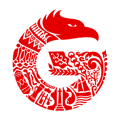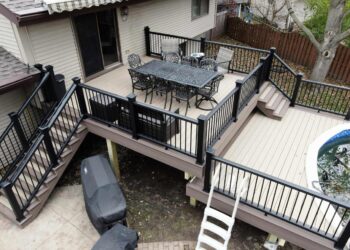Exploring the cost of painting a brick house involves various factors, methods, and tips that can impact the overall expenses. From the size of the house to the type of paint used, this comprehensive guide delves into all aspects of brick house painting costs.
Delving into the breakdown of costs and comparison of painting methods, this discussion aims to provide homeowners with valuable insights for their painting projects.
Factors affecting brick house painting cost
When it comes to painting a brick house, several factors can influence the overall cost of the project. Understanding these key factors can help homeowners better prepare for the expenses involved in painting their brick homes.
Size of the house
The size of the house is a significant factor that affects the cost of painting a brick house. Larger homes will require more paint, time, and labor to complete the project, resulting in higher overall costs. It is essential to consider the square footage of the house when estimating the painting expenses.
Condition of the bricks
The condition of the bricks plays a crucial role in determining the cost of painting a brick house. If the bricks are in poor condition and require extensive preparation work such as cleaning, repairs, or priming, the overall cost of the project will increase.
Ensuring that the bricks are in good condition before painting can help minimize additional expenses.
Type of paint
The type of paint chosen for painting a brick house can also impact the overall cost. High-quality paint brands or specialized paints designed for brick surfaces may come at a higher price point compared to standard paints. Homeowners should consider the durability and longevity of the paint when selecting the type of paint for their brick house to ensure a lasting finish.
Additional services
In addition to painting, additional services such as pressure washing, brick repairs, or caulking can affect the total cost of painting a brick house. These services may be necessary to prepare the surface adequately or to address any structural issues before painting.
While these services can add to the overall cost, they are essential for achieving a professional and long-lasting paint job.
Cost comparison of different painting methods

When it comes to painting a brick house, the choice of painting method can significantly impact the overall cost of the project. Let's compare the cost differences between using brushes, rollers, or sprayers, and discuss the pros and cons of each method in terms of cost-effectiveness and quality of finish.
Brushes
Using brushes for painting a brick house can be a cost-effective option, especially for smaller areas or intricate details. However, it can be time-consuming and may require multiple coats to achieve a smooth finish. The cost of brushes and other painting supplies needs to be factored in when considering this method.
Rollers
Rollers are a popular choice for painting large areas of a brick house quickly and efficiently. They are relatively affordable and can cover a lot of surface area in a short amount of time. However, rollers may not be as effective in reaching into crevices or tight spaces, which can affect the overall quality of the finish.
Sprayers
Paint sprayers are known for their speed and efficiency in covering large surfaces, including brick walls. While they can provide a smooth and even finish, they may require more preparation and cleanup compared to brushes or rollers. The initial cost of purchasing or renting a paint sprayer should also be considered in the overall budget.
DIY vs. Hiring Professional Painters
DIY painting may seem more cost-effective at first glance, but it's essential to consider the quality of the finish and the time and effort required. Professional painters have the expertise and tools to ensure a high-quality result, which can ultimately save you money in the long run by preventing the need for touch-ups or repairs.
Additionally, professional painters may have access to discounts on paint and supplies, which can help offset their service costs
Average cost breakdown for brick house painting

When it comes to painting a brick house, there are several costs to consider, including labor, materials, equipment, and additional services. Each of these factors can contribute to the overall cost of the project, so it's essential to understand how they all play a role in determining the final price.
Labor Costs
Labor costs are a significant portion of the overall cost of painting a brick house. The amount you'll pay for labor will depend on factors such as the size of the house, the complexity of the design, and the number of coats required.
On average, labor costs can range from $1 to $4 per square foot.
Materials and Equipment
In addition to labor costs, you'll also need to factor in the cost of materials and equipment. This includes paint, primer, brushes, rollers, ladders, and other tools necessary to complete the job. The cost of materials and equipment can vary depending on the quality and quantity needed, but on average, you can expect to pay around $2 to $5 per square foot.
Types of Paint
The type of paint you choose can also impact the overall cost of painting a brick house. Latex paint is the most common choice due to its durability and ease of application, with an average cost of $20 to $50 per gallon.
Acrylic paint is another popular option, costing around $30 to $60 per gallon. Oil-based paint is typically the most expensive, ranging from $40 to $90 per gallon.
Number of Coats and Complexity of Design
The number of coats required and the complexity of the design can also affect the total cost of painting a brick house. If your house requires multiple coats of paint or has intricate details that require extra time and effort, you can expect to pay more for labor and materials.
It's essential to factor in these considerations when budgeting for your painting project.
Tips for reducing brick house painting cost

When it comes to painting a brick house, there are several tips and techniques that homeowners can implement to reduce the overall cost of the project. By following these cost-saving measures, you can achieve a fresh look for your home without breaking the bank.
Proper Surface Preparation
One of the key factors in reducing brick house painting cost is proper surface preparation. Ensure that the brick surface is clean, dry, and free of any dirt, dust, or debris before applying paint. This will help the paint adhere better and result in a longer-lasting finish.
High-Quality but Cost-Effective Paints
While it may be tempting to opt for the cheapest paint available, investing in high-quality but cost-effective paints can actually save you money in the long run. These paints typically require fewer coats, have better coverage, and last longer, reducing the need for frequent repainting.
DIY Prep Work
Another way to cut down on brick house painting costs is by taking on some of the prep work yourself. Simple tasks like cleaning the brick surface, removing old paint, and taping off areas can be done DIY, saving you money on labor costs.
Investing in Durability
While it's important to reduce costs, there are times when investing a bit more in painting can actually save you money in the long term. Opting for high-quality paints, primers, and sealants can help protect your brick house from the elements and extend the lifespan of the paint job, reducing the need for frequent touch-ups or repainting.
Last Word
In conclusion, understanding the factors influencing brick house painting costs, comparing different methods, and implementing cost-saving tips can help homeowners make informed decisions when embarking on a painting project. By following these guidelines, individuals can achieve a beautifully painted brick house without breaking the bank.







